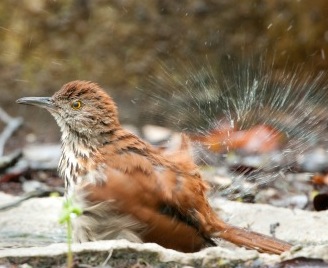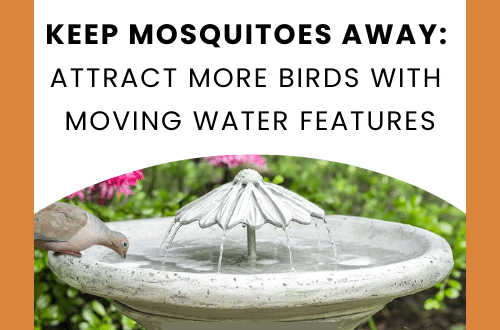-
Despite Gov’t Shutdown U.S. Fish & Wildlife Service Sent Hundreds of Horses to Slaughter Middleman
Maybe this has nothing to do with birds, but due to the nature of animals involved, it’s a subject near and dear to our hearts.
Because we follow them on Twitter, The US Fish and Wildlife Service sent an email they were “back on the job” now that the shut-down is over. To us – it’s not such great news, nor to wild horses, nor wolves, nor anything else that gets in the way of big money interests!
Their PR department and spin doctors do a fantastic job in having folks believe their mission is to protect animals… it’s the furthest thing from the truth!
Even while furloughed, the shady practices continued. Below is an update from The American Wild Horse Preservation, who follows closely (and tries to rescue) the unfortunate horses who are claimed by our Bureau of Land Management and/or our USFWS. How maddening… and our tax dollars fund this!
News
Despite Gov’t Shutdown U.S. Fish & Wildlife Service Sent Hundreds of Horses to Slaughter Middleman
The Sheldon National Wildlife Refuge in Nevada used the government shutdown as an excuse to cancel public observation of the pens where 413 recently-captured wild horses were being held, but it did not stop Refuge officials from recalling furloughed workers to process and ship as many as 250 wild horses to slaughter middleman Stan Palmer (pictured left) in Mississippi.
These horses were unnecessarily rounded up in September. Sadly, since they live on land managed by the U.S. Fish and Wildlife Service, they are not protected by the federal law that protects wild horses and burros on Forest Service and Bureau of Land Management (BLM) lands.
Our efforts continue to hold Interior Secretary Sally Jewell accountable for dumping these horses into the slaughter pipeline, and to track the fate of the horses so callously sent to Mississippi. For more information please click here … we will continue to keep you updated on this disturbing and evolving situation. We won’t let the Interior Department get away with this and just sweep it under the rug. Stay tuned for future actions on this issue.
-
Adding Heated Bird Baths is the Trick for Winter
This question appeared in our in box today. We thought the response might be useful to others who cant seem to attract nesting birds.
“Do you have an idea how I can get the birds to use my bird houses? I have a small yard and only one tree that I can put the bird house in, that the cats can’t get to them. ( Can I put more than one in the tree and hope they will use them. ( I would like them to be used and as well as looks) But they don’t seem to use it. Last year one pair of birds (chickadees I think) did use the house and I was so excited and loved watching them make their nest and feed the young, I thought they would come again this year, but they didn’t. I cleaned the house and actually only saw a chickadee one time this year ( I assumed it was the one that came last year) the bird love for me to feed them and they drink the hummingbird nectar. I even bought a cotton nesting ball, but have not seen any birds even use it. Any ideas will be a great help. I don’t know why the chickadee is not coming around this year.”
Thanks for visiting!
Although they say not to crowd houses together, chickadees will usually nest in hanging houses that are in close proximity to each other… mine seem to anyway! Not sure how large the tree is, but maybe one nest box on each side would do the trick?
Nesting season is through for this year, but your chickadees (or other birds) may use the house for roosting on cold nights.
Not much success with my cotton nesting ball either, I think they’re woven too tightly!
A better mix is using decorative mosses (Spanish and sphagnum sheet moss) feathers, and pet hair if you have access.
You can pick apart the nest ball as well and add this material to the mix.Put these in a standard suet cage, or mesh produce bag from the grocery store. Don’t pack too tightly, so that air can flow through and allow for drying after rain. Hang from a branch where birds will see it. Early spring is the best time to offer the materials… before nesting begins.
You can try adding some dried grass clippings to your house, in hopes of enticing chickadees to roost.
They will hang around for the winter, especially if you’re feeding them.
Offering fresh water is the absolute best way to keep birds around, even if it’s just a plant saucer… keep the water fresh and they will come!Not sure where you’re located, but heated bird baths in winter are truly a God-send for birds!
They need to bathe in order for feathers to work properly!Also, if the cats are outdoors, they may be inhibiting chickadees’ desire to nest, simply because they’re uncomfortable seeing the cats in the yard.
I’ve found over the years, persistence is the key with attracting wild birds! After years of trying, I finally have bluebirds who nest every year 🙂Hope this helps… I think there’s a new blog post here!
Thanks again & happy birding!
Take good care,
Beth -
Is That Animal Attraction Really Eco?
Five Tips to Identify Eco-Tourist Attractions That
May be GreenwashingNEW YORK CITY – October 14, 2013 – In recent years, eco-tourism has become a hot buzzword for environmentally minded travelers, but the World Society for the Protection of Animals (WSPA) advises tourists to research visitor attractions to ensure they are operating responsibly, keeping in mind the welfare of animals and the environment, and avoid those that are simply greenwashing.
Using the Cayman Turtle Farm as an example, Elizabeth Hogan, oceans and wildlife campaigns manager at WSPA, put together a list of five tips that can help tourists identify when an eco-tourist attraction is not as animal- or environmentally friendly as it claims. The turtle farm is a popular tourist destination in the Cayman Islands that alleges to focus on the conservation and the protection of endangered sea turtles, but also sells them for food and has a poor track record on animal protection issues.
1) Avoid direct interaction with the animals.
As a general rule, you shouldn’t be touching animals at an eco-tourist attraction. Whether it’s swimming with dolphins or holding sea turtles, this kind of contact with hundreds or thousands of tourists can traumatize the very animals being protected and compromise their health, sometimes in serious ways. Be wary of any eco-tourist attraction that encourages or allows this kind of contact and know it may also pose a health risk for you personally. For example, at the Cayman Turtle Farm, tourists are encouraged to handle the sea turtles, putting themselves at risk of contracting E.coli and salmonella.
2) If there is a high entertainment to science ratio, stay away.
Eco-tourist attractions must balance science and entertainment. Unfortunately, some lean too heavily on the latter. If the eco-tourist attraction you’re considering has too much entertainment, such as snorkelling with sea turtles in small artificial ponds as the case at the Cayman Turtle Farm, it may not be paying enough attention to welfare of the animals it’s supposedly protecting and the science of conservation.
3) Don’t eat any of the animals supposedly being protected.
Done properly, there’s nothing wrong with farming. But it’s a very different thing than conservation. Any eco-tourist attraction that tries to balance conservation of a species with selling it for meat is caught in a conflict of interest. At the Cayman Turtle Farm, it claims to be helping endangered sea turtles while simultaneously selling sea turtle meat to local restaurants.
4) Look for what trusted third parties have to say.
Before you visit an attraction, spend a few minutes on the Internet to see what trusted third-party groups have to say. In the case of the Cayman Turtle Farm, WSPA as well as other animal and conservation groups have expressed concerns about its policies and practices which are online and come up in any search on the farm.
5) Ask you travel agent, cruise line and hotel concierge lots of questions.
With the four points above in mind, come armed with questions for anyone recommending you visit an eco-tourist attraction. Ask members of the travel industry to investigate the attractions they are promoting and provide proof that the property is operating with animal’s and the environment’s interest at its core. If they can’t answer all of your concerns, look for other animal- and eco-friendly options. In the case of the Cayman Turtle Farm, WSPA and other groups have met with and encouraged cruise lines visiting the Cayman Islands to stop directing tourists to the farm because of its poor track record with animal welfare issues.
WSPA says keeping these five simple tips in mind will help environmentally minded travelers avoid eco-tourist attractions that fail to meet industry standards..
“Ultimately people want to do the right thing and eco-tourism sounds good, it feels good, and people like the idea that they are helping make the world a better place while they are on vacation,” added Hogan. “But it’s not that simple. Luckily if you know what to look for it’s fairly easy to spot problem places even if no one tells you.”
To learn more about WSPA’s campaign to end sea turtle cruelty at the Cayman Turtle Farm, visit http://www.StopSeaTurtleFarm.org.
***
About WSPA
At the World Society for the Protection of Animals, we have worked to expose animal cruelty and prevent animal suffering for more than 30 years. Working with individuals, organizations and governments across the globe, our campaigns range from putting animals at the heart of farming to protecting animals in disasters. Consultative status with the United Nations means we have a unique international platform to prove that the lives of animals are inextricably linked to our own, and now more than ever is the time to stop their suffering.




